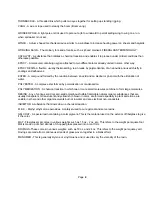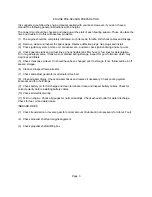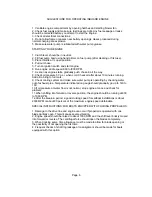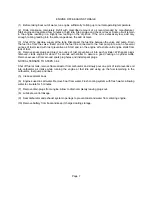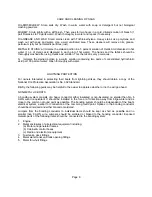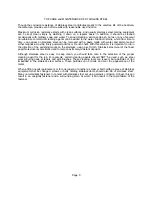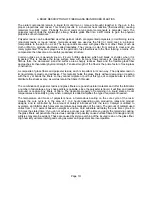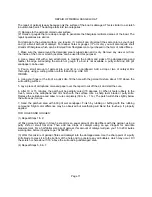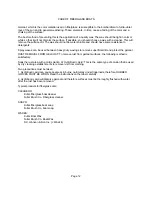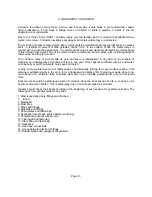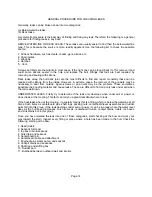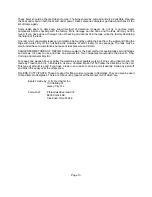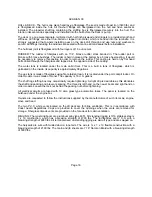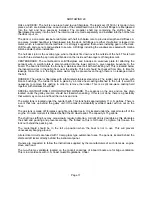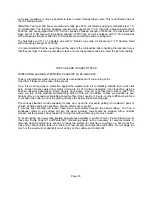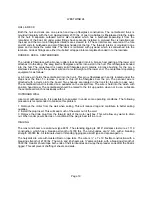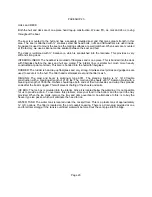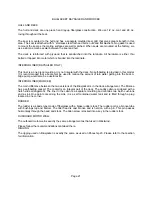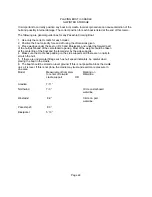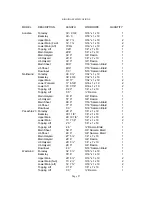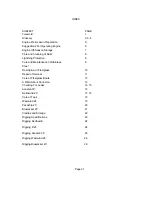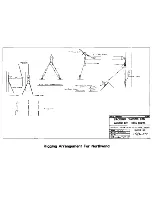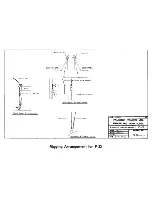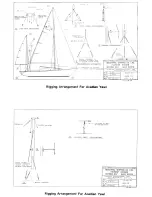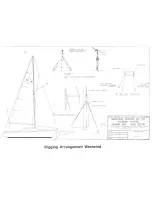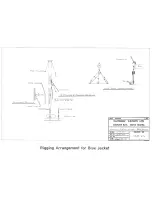
some sea conditions, it may be possible to take in water through these vents. This is particularly true of
the one facing forward.
RIGGING: The mast and boom are aluminum alloy type 6351. All standing rigging Is stainless steel 1 ‘C
19 construction. The forestay, backstay and two main uppers are
7/
32” wire with a breaking strength of
6300 lbs. and are equipped with 7/16” SS turn-buckles, breaking strength of 8580 lbs. The four lower side
stays are 3/16” SS wire with a breaking strength of 4700 lbs. and are equipped with ¾” 55 turnbuckles
with a breaking strength of 6380 lbs. All terminals are aircraft type and are swaged on.
The halyards are 1/8”
7 x 19 flexible wire with ¾” Dacron rope tails. All sheets are 7/ 16” Samson braid
with a breaking strength of 5300 lbs.
It is recommended that the owner tape all the ends of the turnbuckles after checking the locknuts to see
that they are tight. It is also a good idea to tape or cover the spreader ends to protect the jib from chafing.
THE CARE AND UP-KEEPOF TEAK
NORTHWIND, ACADIAN, WESTWIND, PACESHIP 23, BLUEJACKET:
Teak is a remarkable wood. Even so, it has its peculuarities and if you are to get the
most from it these must be taken into account.
True, this wood requires no protection against the weather and it is remarkably durable. Even when left
bare, it doesn’t check easily and is highly immune to rot. Yet if utterly neglected, it can look drab, giving a
boat an unkempt appearance. Some owners have asked “How do I get that clean, silvery look?” The
more you rely on the washing and bleaching action of the sun, the better. Unless your location is par-
ticularly dirty, an occasional scrubbing should suffice. Don’t overdo it. A wire or other stiff brush will tend
to cut down the softer wood of the grain and leave the harder ridges standing high.
The various bleaches made especially for teak do a good job, but avoid getting it on adjacent paint or
varnish. Where sanding is necessary, also be careful not to overdo
it. Usually light sanding will reveal clean wood immediately beneath the dead surface. Too fine a
sandpaper tends to rub surface dirt into the wood. Actually, teak should be scraped with a cabinet
scraper, but few persons have the skill for doing this, without removing too much wood.
To treat outside, the newer teak treating products are available in a wide choice of name brands; two of
these are “Kuhls Teak Oil” and”Penta-Var”. Retreating should not be necessary for several months. A
thorough cleaning ordinarily is enough to ready the surface for brushing or wiping on a fresh coat. For
those who cannot obtain teak oil, a mixture of raw linseed and turpentine will suffice. Do not apply too
much or the wood will not absorb it and it will lay on the surface and collect dirt.
Page 18

